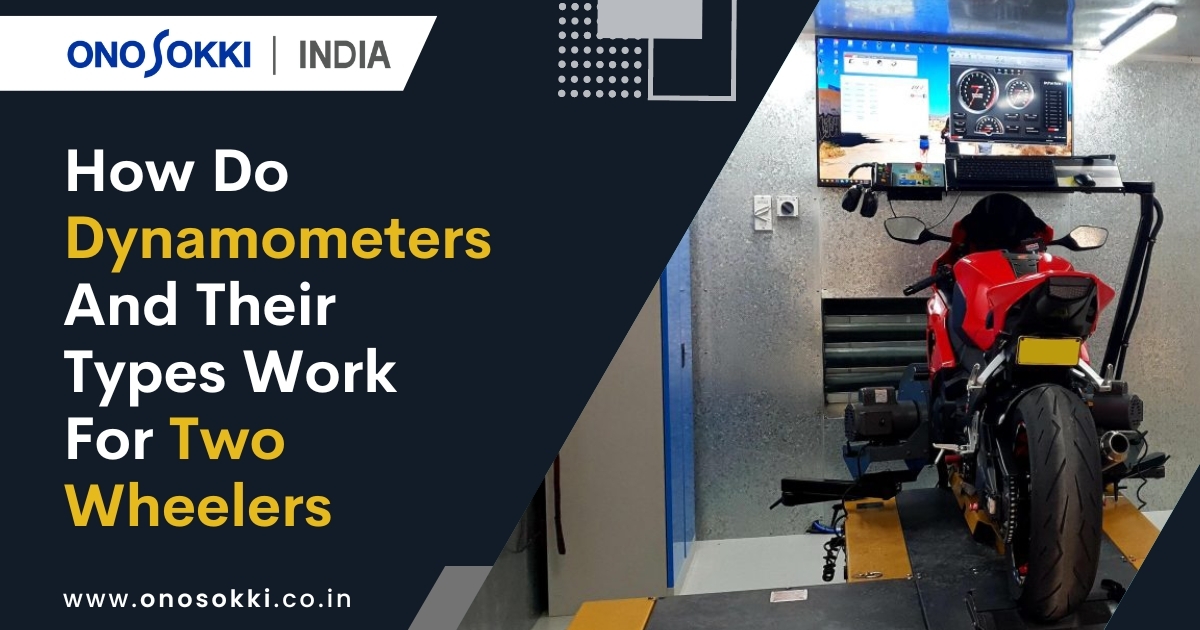



Across the world, everyone is using a bicycle, bike, motorcycle, car, or anything else to travel as per their conveyance. Most houses use two-wheelers as vehicles because they are easy to care for and handle. A dynamometer manages the vehicles and monitors and measures the force, power, and speed. Most companies and industries that use vehicles in bulk, whether for transportation or other purposes, need such devices. The most popular type of dynamometer is a two wheeler chassis dynamometer.
The logistics and transportation industry is a major one that needs such a device to measure and monitor the vehicles they use and own. But not only large-cap industries but small companies and other people can also use this device to check the vehicle’s health. This blog is about the dynamometer and its types, which you need to know before buying this device.
A dynamometer is a tool for measuring power, torque, or force. It can test the performance of engines, electric motors, and other mechanical systems. There are various dynamometers, including electric, hydraulic, and mechanical. They are commonly used in automotive and industrial applications, as well as in research and development.
The most important function and use of a dynamometer are to provide accurate and precise data, but the following are some other benefits of this device:
1. Absorption Dynamometer: Torque is produced by absorption dynamometers by applying restrictions to a rotating shaft by electromagnetic induction, mechanical or fluid friction, or both. Mostly, this device is used where continuous transmission of the load is required, as it provides accurate and precise results. To avoid the effects of transverse load, torque-inducing components are arranged in pairs.
2. Chassis Dynamometer: This device is used to measure the movements of a vehicle’s wheels. Many industries and companies use chassis dynamometer for 2 wheeler as it provides accurate measurement. This device is used to simulate real-world driving circumstances, including all of the forces that are directed at a moving object. A test includes accelerating, braking, and decelerating the test vehicle to get the necessary data.
3. Driving Dynamometer: To determine which type of motor is necessary to operate an engine and electric motor, a driving dynamometer is used. Two components are used to measure and monitor the result: a motor with measuring meters and monitors attached to the device, which we required. The results include information regarding supply, including how much power, force, and speed are used.
4. Engine Dynamometer: Other dynamometers are easy to use conditioning to the engine dynamometer, as it is more complicated to use. Engine dynamometers are used to test and fine-tune engines, unlike chassis dynamometers. The selection of a suitable dynamometer is based on the engine’s size, weight, and performance.
A dynamometer is restricted to industries using vehicles and has a huge demand for measuring force and power in other industries. In the end, you can get accurate results and the best readings from a dynamometer, so it is important to calibrate and test it regularly. If you are also looking to buy products for monitoring and measurement, like dynamometers, sound measurement, and other devices, you can check the website of Ono Sokki. Ono Sokki is known for its innovative and unique products and devices that provide accurate information. These technical products provide accurate results, are easy to operate, and are cost-effective.